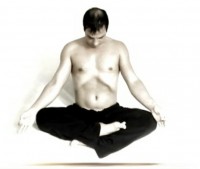Bhastrikā pranayama
Bhastrika means bellows. A bellows is a device for forcing air in a concentrated way usually to help a fire burn. Air is drawn into the bellows through a hole in the bottom and forced out through the nozzle eliminating the need for blowing a smoldering fire.

In Bhastrika pranayama the air is exhaled and inhaled fast and forcefully. Energy is drawn from the Manipuraka or Navel Chakra during exhalation. This creates a sound similar to the bellows when they are used.
Stage 1 - Bhastrika Pranayama
Find a comfortable seated position.
Inhale rapidly and forcefully to better deliver the air. Then exhale rapidly making a sound
like "ummph" with the same kind of force as a large sneeze.
Do at least 4 vigorous breaths making the bellows sound. After the last one release mildly
and begin some Ujjayi (Or other lengthening relaxing breaths)
Hold Antara Kumbhaka after some long relaxing breaths. Measure the length of time and
then do some relaxing breaths again.
Move back into the Bellows breath after retention of inhalation for a measured period of
time and Ujjayi Breaths have been performed for calming.
Try increasing Bhastrika breaths next time if the lungs are not fatigued.

Stage 2 - Bhastrika Pranayama
Inhale rapidly and forcefully to deliver the air into the blood.
Use your belly Chakra for this it will help to draw the air in.
Exhale rapidly making a sound like "ummph" with the same kind of force as a large sneeze.

Stage 3 - Bhastrika Pranayama
Use the hand clasp to control the air passing through the lungs.
Inhalations and exhalations are done through the same nostril while the other is blocked.
The switch can be done each time a Bhastrika breath is taken or twice on one nostril then twice on the other side or three times on each side and so on... it is up to the practitioner.
When the lungs fatigue begin to practice light Ujjayi breathing.
Re-introduce the technique when the nerves and lungs feel restored.
Optional: (Antara Kumbhaka) After each time or periodically
to measure the duration the breath can be held.
Optional 2: Partially block the nostril on the exhalation or on the inhalations and exhalations. It is already challenging to get the air deep into the lungs so for this reason it may not be a good idea to restrict the air on the inhalations.

Stage 4 - Bhastrika Pranayama
Use the hand clasp to control the air passing through the lungs.
In this technique the air is inhaled through the left nostril and exhaled through the right then inhaled through the right and exhaled through the left nostril.( You can start on either side.)
When the lungs fatigue begin to practice light Ujjayi breathing.
Re-introduce the technique when the nerves and lungs feel restored.
Optional: (Antara Kumbhaka) After each time or periodically
to measure the duration the breath can be held.
Optional 2: Partially block the nostril on the exhalation or on the inhalations and exhalations. It is already challenging to get the air deep into the lungs so for this reason it may not be a good idea to restrict the air on the inhalations.

Warning!
Vigorous breathing techniques that change the natural flow of breath significantly can be harmful. Do them with a caring reflection upon the inner bodies. Stop and enter a natural breathing pattern if the nervous system feels uneasy or fatigued. Relax lying down if any strange feeling like nausea or dizziness presents itself. Practice this breathing technique for short periods of time and do passive breathing techniques after.



